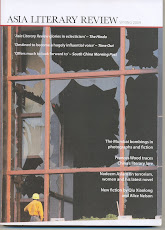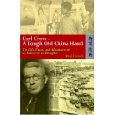
It took me ages to find it on a hooky DVD but eventually I managed to get the fairly recent BBC adaptation of Anthony Trollope’s
The Way We Live Now. And it was worth the wait and then some…
Of course there’s a China angle to T
he Way We Live Now and I was interested to see how they’d handle it. Trollope used a relatively common devise in his novel that had been popular in European literature for some time: the genre of faux Oriental letters and characters to express views on the West was a literary fad of the day for quite some time with all manner of imaginary Chinese, as well as Indians and Persians, popping up to comment on European society. At the same time to have been to China was emerging as a sign of worldliness, knowledge and a probable fortune in the bank.
This theme was to run for a long time – Goldsmith’s
The Citizen of the World (illustrated left) was a collection of essays p

urportedly written by a Chinese philosopher called Lien Chi Altangi – ‘a native of Honan in China’ – to his friend Fum Hoam, the President of the Ceremonial Academy at Peking, and all about the odd quirks of London and the British allowing Goldsmith to vent his spleen concerning the industrialising England he believed to be the ruination of the nation. The French theologian, poet and writer François Fénelon had imagined a discussion between Socrates and Confucius in his
Dialogues des Morts (1700) written as a lesson for Louis, Duke of Burgundy, while Fénelon was the boy’s tutor at Versailles; the legal scholar and Paris magistrate by day (and fan of low comedic theatre by night) Thomas-Simon Gueulette (1683-1766) also played with this form in his Chinese Tales: or the Wonderful Adventures of the Mandarine Fum-Hoam (1725); and later, in 1757, Horace Walpole wrote his
Letter of Xo-Ho, purportedly penned by a Chinese philosopher in London to his friend Lien Chi in Peking. Over a century later European writers were still at.
Henry James’s novel
The Europeans (1878) featured the fastidious and snobbish Madame Munster appraising a potential guest who is known to have previously visited China and declares, ‘A man of the Chinese world! He must be very interesting.’ James never visited China himself but did note in the margins of his copy of Boswell’s
Life of Johnson that, like Johnson, he would very much like to visit the Great Wall.
Trollope (below) us

ed a similar devise in
The Way We Live Now, his novel of fraudulent machinations in the railway business, first published in 20 monthly parts over 1874-75, where the book’s narrator comments on the ingratiating guests attending Auguste Melmotte’s banquet for the Emperor of China despite believing their host immoral and even criminal. Trollope, in so many ways the quintessential Victorian novelist, used the device of a banquet hosted by an international financier of questionable parentage, nationality and morality admired for his wealth but suspected for his own foreignness and the even more overt and exotic foreignness of the Chinese Emperor to comment on the vacuousness of London society. Of course no Chinese Emperor ever got invited to a London soirée or to visit England, or for that matter ever expressed a wish to experience either.
I was glad to s

ee that the BBC had the odious Melmotte (played brilliantly by David Suchet, left) hold the banquet and interact with the Chinese Emperor and his aides and obviously try and sell them a dodgy railway deal. The poor Emperor was perplexed at the gluttony and bad table manners of the Europeans (a rather obvious allusion to their gluttony for stocks and shares in the TV show). The Emperor looks perplexed throughout.
Great TV.

 o Land (start worrying here!) who are revamping the site. However, locals and preservationists fear access will be strictly limited. The Foundation has said that entry to see the interesting interior architecture will only be allowed to non-guests on official tours. One local told the South China Morning Post – ‘Please don’t turn it into a private villa for the rich. It won’t cost them much to rent the whole hotel.’ Local Civic Party lawmaker Tanya Chan is also arguing for greater public access to appreciate the building and points out that the developer originally declared their intention to allow the public to appreciate
o Land (start worrying here!) who are revamping the site. However, locals and preservationists fear access will be strictly limited. The Foundation has said that entry to see the interesting interior architecture will only be allowed to non-guests on official tours. One local told the South China Morning Post – ‘Please don’t turn it into a private villa for the rich. It won’t cost them much to rent the whole hotel.’ Local Civic Party lawmaker Tanya Chan is also arguing for greater public access to appreciate the building and points out that the developer originally declared their intention to allow the public to appreciate 
















































